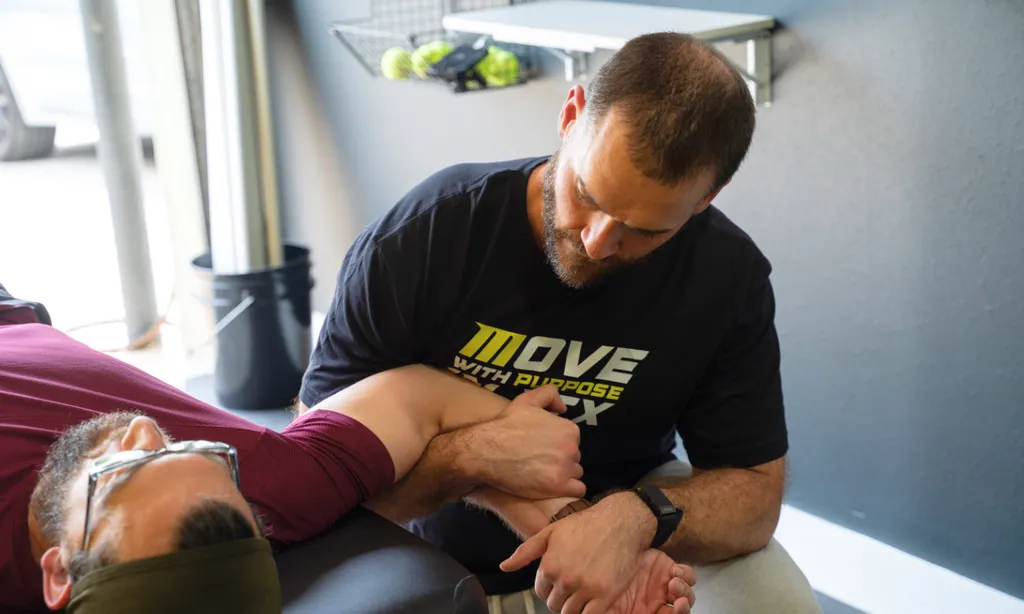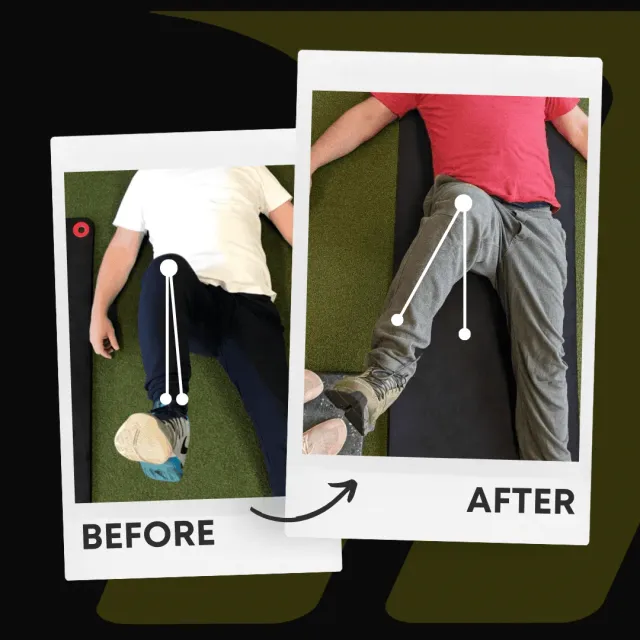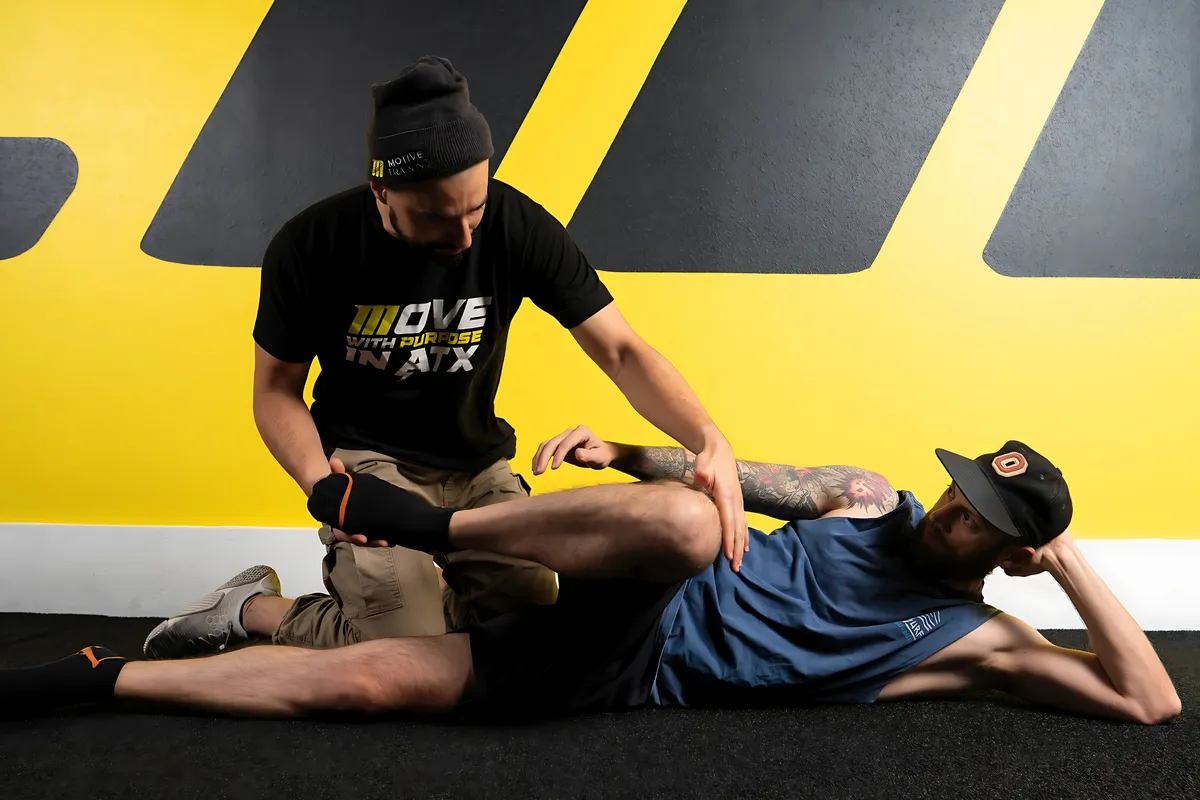Enhancing Post-Rehab Strength: Training Tips in Austin
June 10, 2025 | Injury Rehab

Being “cleared” after an injury doesn’t mean you’re ready to jump back into training. It means you’re ready to rebuild. Post-rehab strength training is where we reconnect structure, restore resilience, and help the body move—not just without pain, but with purpose.
In a city like Austin, where activity is a way of life, this transitional phase matters. It’s the difference between bouncing back stronger or ending up in another cycle of breakdown.
Understanding Post-Rehab Strength
What is Post-Rehab Strength?
Post-rehab strength isn’t about throwing weight on the bar—it’s about restoring what was lost during injury and downtime. That includes range of motion, tissue tolerance, and coordinated joint control.
The work is slow, specific, and focused on reintroducing load without triggering setbacks. At Motive Training, we approach post-rehab with a mobility-first lens: build capacity where movement is limited, then layer strength on top.
Why It Matters
Too many people skip this phase and jump straight into their old training routines. The result? Flare-ups, compensation, or re-injury.
Real post-rehab strength work:
- Reintegrates compromised joints into full-body movement.
- Improves load tolerance and movement confidence.
- Builds capacity through controlled, measured progression.
It’s a process, but the payoff is long-term resilience.
Key Components of Post-Rehab Strength Training
Adaptive Inputs Over Rigid Programs
Post-rehab isn’t about doing “modified” workouts. It’s about applying the right stimulus at the right time to the right tissues. That might mean:
- Isometrics at end-range.
- Tempo-controlled loading with reduced complexity.
- Joint-focused drills targeting your specific limitations.
For example, if you’re recovering from a shoulder injury, we don’t just scale a press—we rebuild the shoulder from the inside out. Controlled Articular Rotations (CARs) often lead the way.
Intentional Progression
Progression during this phase is not just about “adding more.” It’s about earning the right to do more—by proving your joints can tolerate load across time, not just effort in a single session.
We build:
- Volume before intensity.
- Control before complexity.
- Joint health before global outputs.
This method pairs well with strategies like PAILs and RAILs, which safely expand usable range while reinforcing strength at every degree of motion.
Common Challenges in Post-Rehab Strength Training
The Psychological Hurdle
Fear of re-injury is real. Many clients are hesitant to load or even move the affected area again. That’s why coaching matters. The goal isn’t just to teach exercises—it’s to rebuild trust in your body.
Training through this phase requires patience, consistent feedback, and a deep understanding of the nervous system’s role in recovery. That’s where Motive’s joint-first system really shines.
Lingering Physical Limitations
Most injuries leave behind movement deficits that general physical therapy programs often overlook. It’s why our process starts with a Functional Range Assessment. Without knowing what your joints can do—or, more importantly, can’t—you’re just guessing.
You can’t move where you can’t move. And if you don’t assess, you assume.
Designing a Post-Rehab Strength Plan
Get Clear on What You’re Training For
Post-rehab goals should be structured and measurable. Examples include:
- Restoring hip internal rotation to pre-injury levels.
- Performing a single-leg split squat without compensation.
- Increasing joint-specific isometric tolerance over 90 seconds.
This is where the Motive Mobility approach helps turn inputs into outcomes.
Work With Someone Who Actually Understands Rehab
Generic programs don’t work post-rehab. You need context—someone who understands tissue healing timelines, mobility limitations, and progressive overload—without triggering regression.
If you’re looking for that level of care in Austin, our South Austin personal training team specializes in post-rehab progressions that blend mobility, stability, and strength.
The Role of Recovery, Inputs, and Consistency
Recovery doesn’t just happen in the hours after training. It happens in how you eat, how you sleep, and how often you revisit joint inputs that restore function.
Tools like daily CARs, end-range holds, or low-intensity input sessions ensure you’re feeding the system consistently—without needing to overexert yourself.
Pair that with solid hydration, protein intake, and movement-rich days outside the gym, and you’re giving your body everything it needs to adapt.
Post-Rehab Training in Austin: Where to Go From Here
Austin is an active city. We see cyclists, lifters, and desk workers alike working through chronic issues that were never fully addressed after rehab.
The good news? There’s a better way forward. Training at a facility that understands both performance and pain—such as Motive Training—ensures you’re not guessing about your progress.
Whether you’re a few weeks out from PT or dealing with lingering movement issues years after an injury, this is your chance to reclaim how you move.
Final Thoughts
Rehab may have ended, but recovery is far from over.
Post-rehab strength is where you regain control, rebuild capacity, and finally move without fear. It’s not about “getting back” to what you used to do. It’s about becoming better than before.
If you’re in Austin and want to move again—stronger, smarter, and pain-free—it starts here.
Written by
Brian Murray, FRA, FRSC
Founder of Motive Training
We’ll teach you how to move with purpose so you can lead a healthy, strong, and pain-free life. Our headquarters are in Austin, TX, but you can work with us online by signing up for KINSTRETCH Online or digging deep into one of our Motive Mobility Blueprints.

